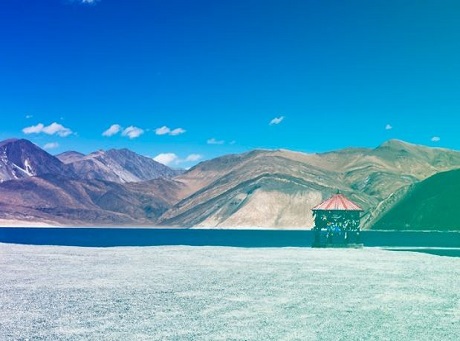
How to utilize the layers in 3D Animation
Introduction:
In the dynamic world of animation, where creativity knows no bounds, understanding the intricate layers that make up 3D animation is key to unlocking a realm of limitless possibilities. From bringing characters to life to creating immersive environments, mastering the utilization of layers is a fundamental skill for any aspiring animator. In this article, we will explore the nuances of working with layers in 3D animation and delve into the techniques that can elevate your creations to new heights.
The Foundation of 3D Animation – Layers Demystified
Unpacking the Basics
Before we dive into the advanced techniques, let’s establish a solid understanding of what layers are in 3D animation. In its essence, a layer is a separate plane or level within the animation workspace. These layers act as individual elements that collectively contribute to the final animated scene.
Types of Layers in 3D Animation
There are various types of layers in motion graphics services, each serving a specific purpose. Understanding these types is crucial for efficient workflow and achieving the desired visual effects.
Modeling Layers: The foundation of any 3D animation project, modeling layers involve creating the 3D objects that populate the animated world.
Texturing Layers: Adding depth and realism, texturing layers bring surfaces to life by applying textures and materials to the 3D models.
Animation Layers: As the name suggests, these layers are dedicated to animating objects, characters, or scenes. Key framing and motion paths find their home here.
Lighting Layers: Illuminating the scene is the role of lighting layers. Adjusting the intensity, direction, and color of light sources is essential for setting the mood.
Rendering Layers: The final step in the animation process, rendering layers compile all the elements, applying shadows, reflections, and other visual enhancements to produce the final output.
Optimizing Your Workflow with Layer Management
The Art of Organization
Efficient layer management is the key to a smooth workflow. Assigning clear names to layers, grouping related elements, and utilizing color-coding can significantly enhance your organization, saving time and minimizing errors.
Utilizing Parenting for Seamless Animation
One powerful technique for streamlining animation is parenting. By linking objects or layers together, you can create intricate movements with ease. This not only simplifies the animation process but also allows for quick adjustments without affecting the entire scene.
Achieving Realism – Layered Textures and Shading
Mastering Texture Layers
Texturing is where the magic happens in terms of visual appeal. Layering textures adds depth and detail to 3D models. Experiment with different textures and blending modes to achieve the desired look for your objects.
Shading Techniques for Realistic Rendering
Layered shading can bring a sense of realism to your animations. Explore techniques such as ambient occlusion, specular mapping, and reflection layers to enhance the visual fidelity of your scenes.
Enhancing Visual Appeal through Lighting Layers
Setting the Scene with Strategic Lighting
Proper lighting is paramount in creating a visually stunning animation. Experiment with different lighting setups by using separate lighting layers to control the intensity and direction of each light source independently.
The Final Touch – Rendering Layers and Post-Processing
Configuring Rendering Layers
As you prepare to render your animation, fine-tune rendering layers to achieve the desired output. Adjust settings such as resolution, frame rate, and image quality to ensure a polished final product.
Elevating Your Animation with Post-Processing
Consider adding post-processing layers to your animation to apply effects like depth of field, motion blur, or color correction. These layers add a professional touch, making your animation stand out.
Streamlining Collaboration – Collaboration Layers for Team Projects
Understanding Collaboration Layers
In the collaborative landscape of animation, working seamlessly with a team is vital. Collaboration layers facilitate teamwork by allowing multiple animators to work on different aspects of the project simultaneously. Explore tools and techniques that enable the efficient use of collaboration layers, ensuring that your team can contribute harmoniously to the overall vision.
Best Practices for Collaborative Layer Management
Effective communication is the cornerstone of successful collaboration. Establish clear naming conventions, color-coding systems, and documentation practices to enhance understanding among team members. By implementing these best practices, you’ll maximize the potential of collaboration layers, creating a cohesive and unified animated masterpiece.
Future Trends – Exploring Advanced Layer Techniques in 3D Animation
Pushing Boundaries with Advanced Layer Techniques
As technology evolves, so do the possibilities within the realm of 3D animation. Explore cutting-edge techniques such as volumetric rendering layers, machine learning-assisted animation layers, and real-time ray tracing. These advanced layer techniques push the boundaries of what’s possible, offering animators new tools to elevate their craft and create groundbreaking visual experiences.
Adapting to Emerging Technologies
Stay ahead of the curve by staying informed about emerging technologies in the animation industry. Embrace tools and software updates that introduce innovative layer functionalities. Whether it’s AI-driven automation or immersive augmented reality layers, adapting to these emerging technologies ensures that your animations remain at the forefront of creativity and technical excellence.
Conclusion:
In conclusion, mastering the art of utilizing layers in 3D animation opens the door to a world of creative possibilities. From foundational modeling layers to the final rendering touches, each layer plays a crucial role in bringing your imagination to life. As you embark on your 3D animation journey, remember to experiment, stay organized, and embrace the layered brilliance that sets your creations apart.
And for those seeking to enhance their online presence, exploring professional website SEO services is essential. Just as layers are the building blocks of 3D animation, SEO services are the foundation of a robust online presence, ensuring that your content shines in the vast digital landscape. Through strategic optimization, your website can ascend the ranks and captivate your audience, much like a well-crafted animation.



